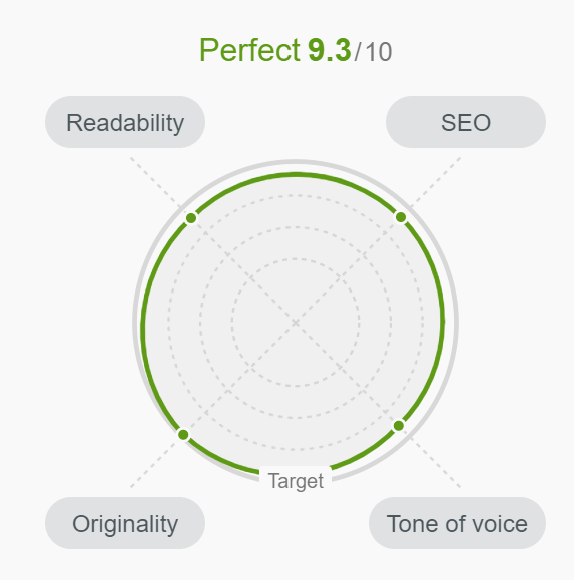We’ve had a lengthy love affair with buyer personas. I’ve created more than I care to count—analyzing pain points, interviewing customers or prospects, and making elegant charts to represent the target audience.
But I’m done. I can’t look at another stock photo representing Ian IT Director, Fran Facilities Manager or Homer Human Resource VP.

I don't argue with the reasoning behind personas. You can’t market or sell if you don’t understand your customers. You need personas to develop targeted content that will resonate with decision makers. They are a core tenet of inbound marketing.
But profiling your ideal customers and creating buyer personas takes time and money. When you finish, you share them and everyone agrees they look great! Then what?
Your persona docs include key product/solution message points that your research shows will resonate with that decision maker. This allows you to create that personal experience for your potential customers when you send them email, show them ads, develop blogs or premium content, or when they visit your website.
That’s the holy grail, right? The email you send Ian IT Director speaks more to his concerns than the version you send Homer HR. When Fran Facilities Manager visits your website, the content is more geared toward her view of projects and processes.
The Dirty Little Secret of Marketing Personalization
Even today, we limit most email personalization to a %%[FirstName]%% inserted in the greeting. Website visitors see the same content—whether we know who they are or not. Retargeting hits all cookied visitors with the same ad, regardless of the pages they view.
83% of B2B marketers cite creating personalized content as their most significant challenge, which is no surprise because it’s a hard thing to do.
The problem I have with buyer personas is twofold: they are expensive and don’t get used. Personas are the treadmill of the digital marketing world. We plan to use them every day to become fit and fast marketers. Instead, they sit in a folder on our network collecting virtual dust.
It’s time to drop the buyer persona in favor of tactics that are easier to implement, more effective, and deliver a better customer experience.
Shift to Data-Driven Marketing
Buyer personas are hypothetical. While we base them on actual target customers, they don’t include any real information. We should base personalization strategies on real data, not theoretical.
Marketing automation platforms and intent services make it possible to collect vast amounts of information about people who engage with your website—even the anonymous ones.
Used judiciously, this data can help you create a better experience for your website visitors. (Yeah, don’t be creepy.) Simple personalization such as showing a support number instead of a sales number to a known customer can be helpful and requires little time to implement (with the right marketing automation platform).
Pro tip, clean your contact lists every six months to keep your email sending health up. This is a brilliant opportunity to check your first and last name fields to ensure proper formatting—since you’ll still use %%[FirstName]%% personalization. We’ve all received a “personalized” email that made it clear the company didn’t know us at all. We like ZeroBounce for list cleaning.
Data and personalization shine when you combine them with account based marketing.
Why You're Hearing about Account Based Marketing (ABM)
When I’ve asked sales reps who their buyers are, I hear the same response, “It varies.” But if I ask them which companies they want to sell to, I get a very specific list.
Even if it’s not a formal sales initiative, most sales teams engage in some account targeting and prioritization. ABM strategies align sales and marketing on what key accounts they should target.
Like data-driven marketing, we focus ABM on the actual, not hypothetical. These are companies you’d like to have as customers. It’s easy to measure the success of any ABM campaign.
ABM centers on a well-considered list of high-value accounts that comprise a much smaller section of potential customers. The smaller scope helps keep marketing efforts laser-focused. It’s much easier (and less expensive) to market to a sub-set of customers instead of the entire buyer universe.
It’s helpful to group your target accounts by region and organization type. You can’t personalize for every industry or region. Part of making ABM successful depends on your ability to organize and prioritize.

At Pivot, we might group our target accounts by type rather than region since we can work with companies around the world. While we understand concerns vary by region/county, we have limited resources for our own marketing. That’s why grouping accounts by AV integrator, AV manufacturer, and high-tech (non-AV) makes the most sense for us.
What this allows us to do is build dynamic content based on three groups. This is far more reasonable than trying to personalize based on specific personas that we would need to build out for each industry we serve (about 12 personas). We can further personalize based on specific company data such as company name, logo, and location.
You’ve got to know your audience, and what level of personalization is appropriate for them. Most of our target account contacts are marketing and sales professionals who think personalization is great. But if we were targeting healthcare professionals, we’d use some discretion.
What's Next?
We will discuss our favorite tools and tactics for ABM, personalization and collecting data on known and unknown website visitors in upcoming blogs. Sign up to get notified when we post.
Something else that’s fun—this blog scored a 9.3/10. If you’d like to know more about the SEO software we use, or if you’d like us to assess your blog, let us know.

What do you think of this blog?
